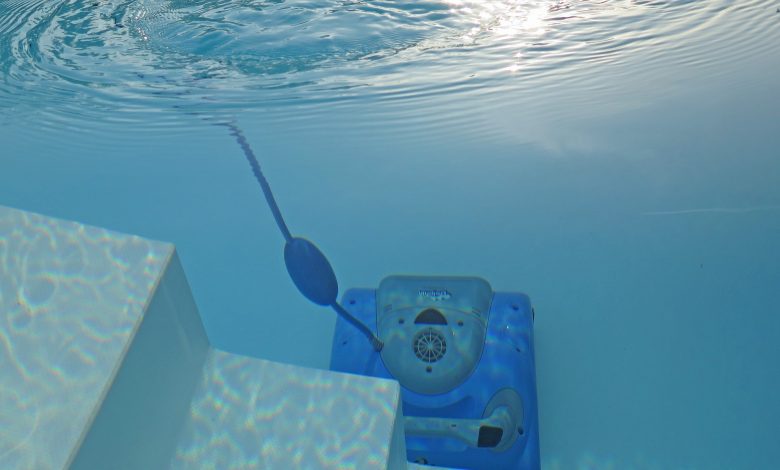Tips to Maintain Cleanliness of Your Pool

Maintaining a beautifully clean pool is not always as time-consuming as you may believe. Each pool is unique, as are its maintenance requirements. They do, however, have one thing in common: the key to maintaining excellent pool health is consistent, routine upkeep. If you prefer to resolve common issues such as murky water or malfunctioning pumps on your own, always consult the manufacturer’s instructions before repairing or operating equipment. Whether you hire a professional swimming pool service firm to maintain your pool, you must still take a few steps to guarantee it remains in good shape for years.
Tip #1: Open Your Swimming Pool for the Season
When the swimming season arrives, a pool that has been properly winterized may be quickly reopened. Most essential, do not remove the pool covering until the area surrounding the pool has been cleaned. Sweep or wash debris away to keep it out of the pool, and then fill the pool to its regular water level with a garden hose. Reconnect any devices that were previously disconnected and then open the skimmer line valve to allow water to flow through the circulation system. After determining the pH level of the water, shock the pool. It will take at least a week for the pool to level out and become swimmable and then see to it that the pump operates 24 hours a day and gradually lower the run time by an hour or two each day until the water balance is achieved.
Tip #2: Winterize Your Swimming Pool
Depending on where you live, you may or may not need to winterize your pool. If the weather in your region drops below freezing, you’ll have to take precautions to keep your pool healthy. Pool water that remains in pipes might freeze and cause harm. To avoid this, when swimming season is ended, use an air compressor to blast water out of the pool’s piping. Additionally, remove as much water from the filter and heater as feasible. Any residual water may be disposed of safely using nontoxic antifreeze but be aware please take note that this is different from antifreeze for vehicles. The heater, pump, and chemical feeders should be disconnected and should be cleaned and stored separately.
Finally, clean the pool by skimming, brushing the walls, vacuuming, emptying the skimmer baskets, closing the skimmer line valve, lowering the water level to roughly 18 inches (45 cm) below the coping, and super chlorinating. Finally, cover the pool to keep debris out.
Tip #3: Locate and Patch up Leaks
Oftentimes, determining whether low water levels are caused by evaporation or a leak is challenging. A simple bucket test might help you locate leaks in your pool by filling a plastic bucket halfway with water and then marking the water line on the inside of the bucket. Then, allow two or three days for it to float. There are two things that you should take notice of, first, if the water level inside and outside the bucket has decreased by the same amount, this is only due to evaporation, but if the pool water level has dropped below the level of the water within the bucket, then your pool is leaking. This is when you should contact an expert to get it patched.
Tip #4: Super Chlorinate the water to remove odor
Organic pollutants such as ammonia or nitrogen accumulate over time in a pool. Massive concentrations of these pollutants can react with the chlorine in a pool to generate chloramines, which give pools their distinctive chlorine smell. To eliminate this pungent stench, pool water must be super chlorinated – or shocked – back to its normal chlorine levels. While it may seem contradictory, applying a high concentration of chlorine to a pool will eliminate the stink. Certain pools should be shocked weekly, while others can go substantially longer between shocks. To achieve the greatest results, follow the manufacturer’s recommendations before super chlorinating your pool.
Tip #5: Maintain a constant pH level
Pool water should be checked regularly to ensure that it is safe and healthy and this can be done by using a pH scale which is a scale that ranges from 0 to 14 in terms of acidity or alkalinity. A value of 7.2 to 7.8 is optimal; this range is harmless for swimmers and enables sanitizers to operate at maximum efficiency.
Read our blog: Luxuries Villa
A testing kit may be used to determine the pH level of your pool by taking a sample of pool water and then supplementing the sample, if the water changes color, this indicates chemical balance. Test strips operate uniquely. When they are submerged in water for a few seconds, the dyes in them cause them to change color. After that, match up the strip to a color swatch to assess the pool’s pH level, and then use this data to determine the number of chemicals that your pool will require.
Tip #6: The heater should be professionally serviced
Pool heaters are often the least maintenance-intensive piece of pool equipment. For a couple of years, gas heaters can operate without service, and electric heaters can survive much longer. Consult your manufacturer’s handbook for precise advice on how to care for your product. At times, calcium scales build up inside the heater’s tubes, impeding flow and hindering the water from heating properly. When this happens, it is better to hire a professional because you may have to remove the heater and have the tubes polished with a wire brush or acid. Depending on the quantity of care necessary, hiring a swimming pool service provider may cost $100 or more each month.
Tip #7: Maintain a Clean Pool Filter
Pool filters come in three varieties: cartridge, sand, and diatomaceous earth. While each kind has its own set of maintenance requirements, all require frequent cleaning based on the type of filter and the frequency with which a pool is used. Clean the filter more frequently than advised to avoid impeding the filtration process. But, take note that having a small amount of dirt in the filter is still better than a completely clean filter because the dirt assists in trapping other particles thereby removing debris from the water. However, you do not want to allow the filter to become too clogged, and keep in mind that an increase in the flow between the pressure gauge and flow meter indicates that it is time to clean the pool. Thus, when the difference between the two values reaches 10 to 15 pounds (4.5 to 6.8 kilograms) per square inch, it is time to clean the filter.




